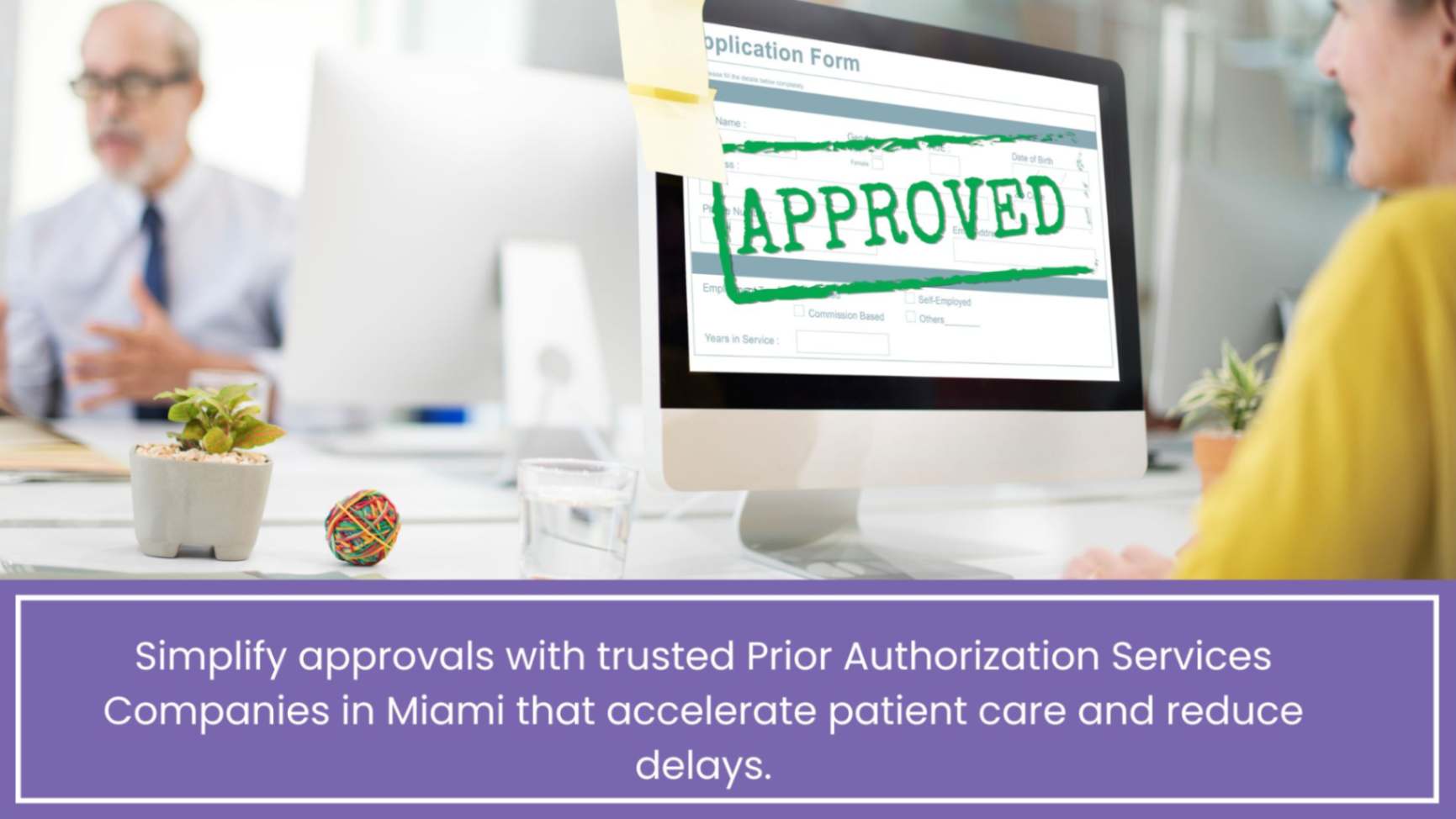Reducing Claim Denials Through Effective Eligibility Verification
Claim denials are among the most expensive and persistent problems in the intricate world of healthcare revenue cycles. In addition to producing lost or delayed income, each denied claim greatly exhausts administrative resources, leading to rework, appeals, and increased irritation among patients and staff. A stunning percentage of denials are caused by a single, fundamental failure: insufficient eligibility and benefits verification. There are numerous other causes for denials, such as coding errors or a lack of medical necessity.
As your first line of defense against avoidable denials, eligibility verification is more than simply a pre-registration checkbox; it’s the fundamental first step in a sustainable revenue cycle management. Healthcare providers can proactively reduce risks, guarantee appropriate compensation, and give their patients a transparent financial experience by verifying a patient’s insurance eligibility and comprehending their particular benefits prior to services being rendered.
In order to protect your practice’s financial stability, this blog post will explore why reducing claiming denials through effective eligibility verification is essential, the significant costs of doing it incorrectly, process optimization best practices, and how technology is transforming this crucial task.
Table of Contents
Expensive Price of Skimping on Eligibility Verification
Inadequate eligibility and benefits verification has serious repercussions that affect all aspects of your practice:
- Direct Financial Losses: Revenue loss results directly from unpaid claims brought on by faulty coverage. This results in larger bad debt, more accounts receivable (A/R) days, and serious cash flow issues that can ruin even a successful practice.
- Rejected claims continue to be a major problem. They remain. Your billing team’s investigation of denials takes a long time. Obtaining supporting documentation, getting in touch with payers, and managing complex appeals procedures are all part of this process. Workers’ attention is diverted from more productive tasks. The costly administrative overhead is to blame for this.
- Inaccurate information about insurance coverage can lead to patient confusion and unhappiness. For patients, this may result in unforeseen and confusing expenses. This could negatively impact your practice’s reputation. This can irritate people. It may also end in distrust and hostility.
- Receiving medical care may be delayed as a result of reimbursement issues. Additionally, they could lead to inefficiencies in operations. Important visits or treatments may be delayed because to uncertainty regarding patient coverage. This affects clinical effectiveness and patient access.
- Audit risks exist during payer audits. Reimbursement requests or fines may result from inaccurate eligibility and billing.
- These repercussions highlight an obvious reality: making a significant investment in thorough eligibility verification is a strategic necessity rather than a cost.
Why Your Initial Defense Mechanism Is Eligibility Verification?
A strong preventative measure, efficient eligibility verification finds and fixes possible problems before they become expensive denials:
- Verifies Active Coverage: Verifying that the patient has active insurance coverage on the day of service is the simplest but most important step. This prevents denials for inactive policies.
- Determines Patient Financial Responsibility: It instantly makes the amounts of copayments, coinsurance, and deductibles (met vs. remaining) clear. This significantly lowers patient bad debt by enabling upfront collection or transparent financial counseling.
- Identifies Critical Requirements: It indicates whether a primary care physician referral or prior authorization is needed for the service. Missing these essential approvals is a guaranteed denial.
- It verifies service-specific coverage. It confirms that the patient’s plan covers the specific service being provided.
- Verifying coverage helps prevent expensive out-of-network claims. It also helps prevent patient annoyance.
Key Challenges in Achieving Effective Verification
Despite its importance, eligibility verification faces numerous challenges that must be addressed for it to be successful:
- In the healthcare industry, insurance plans are intricate. Regulations, benefit plans, and verification techniques such as phone calls, online portals, and electronic data exchanges are specific to each plan.
- Accurate patient data is hard to come by. Patients frequently give insurance information that is incomplete, out-of-date, or erroneous. Issues with insurance claims may result from this.
- Comprehending a patient’s plan can be difficult. It can be difficult to grasp details like visit limitations, exclusions, and coverage tiers.
- Timeliness Pressures: If coverage is confirmed too soon before the service date, there won’t be much time to address problems, get authorizations, or provide patients with financial advice.
- Manual Process Inefficiencies: It takes a lot of time, is prone to human error, and restricts scalability to rely on manual phone calls and navigate numerous payer websites.
Best Practices for Eligibility Verification Process
Your firm need a thorough and proactive eligibility verification strategy in order to successfully lower claim denials:
Start Early, Verify Often (Pre-Service is Paramount:
- Pre-registration or scheduling is the ideal time to accomplish this. As soon as an appointment is made, verification should start, especially for complex procedures or new patients.
- 48–72 Hours Before Service: To catch any last-minute coverage changes, double-check closer to the scheduled appointment.
- For Recurring Patients: Don’t assume coverage is static. Re-verify periodically for chronic care patients or those with long treatment plans.
Collect Comprehensive Patient & Insurance Data:
- Go beyond the basics. Obtain full patient demographics. Obtain primary and secondary insurance details, including policy ID and group ID.
- Confirm current contact information for patient financial counseling.
Verify ALL Necessary Details (Beyond “Active”):
- Active Coverage Dates: Crucial start and end dates of the policy.
- There are rules specific to each sort of plan. Healthcare coverage includes health insurance policies such as Medicare, Medicaid, and others. PPO, POS, EPO, & HMO options are some of these plans.
- Financial components of health insurance are deductibles, coinsurance, copayments, and out-of-pocket maximums. These are the monetary parts of health insurance.These elements determine how much you pay for healthcare services. Deductions are available for both the amount paid and the remaining balance.
- Specific Service Coverage: Verify that the patient’s benefits cover the precise service that is scheduled. This includes limitations on certain imaging procedures, blood tests, and visits (physical therapy, for instance).
- Requirements for prior authorization and referrals: Assess whether they are urgently required. Start the necessary procedures.
- Verify the provider’s in-network status with the patient’s particular plan.
Document Meticulously:
- Keep a thorough audit trail for each verification. Note the date, time, the verification method (phone, web portal, EDI), the payer representative’s name and ID (if calling), and any validated information. Screenshots of online portals are invaluable. Your best line of defense against denials is this paperwork.
Transparent Patient Financial Counseling:
- Based on your comprehensive verification, provide patients with a clear, estimated breakdown of their financial responsibility before the service.
- Discuss payment options, payment plans, or financial assistance programs.
- If at all possible, get a signed acknowledgement of financial responsibility. Transparency reduces billing disputes and improves collections.
Leveraging Technology for Superior Verification
Manual eligibility verification is a bottleneck. Technology is revolutionizing the process by turning it from reactive to proactive:
- Solutions for Real-Time Eligibility: These technologies provide immediate eligibility checks through EDI transactions by integrating directly with your EHR/PM system (270/271). They significantly reduce manual effort and provide immediate confirmation of active coverage.
- Automated Benefits Verification Tools: These advanced tools extract specific benefit information from payer systems, such as deductibles, copayments, service restrictions, and prior authorization requirements, going beyond simple eligibility. They can even provide estimated patient cost.
- Integrated Workflow Automation: By incorporating verification data into your scheduling, medical billing, and patient financial counseling workflows, the best solutions eliminate human data entry and ensure consistency.
- AI and Predictive Analytics: Because advanced technology can analyze historical data to identify complex situations that are more likely to have eligibility issues, your team may focus their efforts on high-risk verifications first.
Conclusion:
Effective eligibility and benefits verification is essential to a healthy revenue cycle. While compliance is a component of healthcare operations, it is not the sole objective. Additional objectives include preventing claim denials, maintaining cash flow, and lowering administrative workloads. The objectives also aim to enhance patient confidence through financial transparency.
This vital role can be transformed into a revenue generator for healthcare services. By putting best practices into practice, they can accomplish this. They are also capable of making smart use of advanced technology. The best long-term investment your practice can make is to stop denials at their source by implementing thorough eligibility verification.
One of the most costly and annoying problems with healthcare revenue cycle management services is still claim denials. Ineffective eligibility and benefits verification is a common yet crucial error that leads to a surprising number of denials. This article examines how comprehensive, proactive verification protects income and enhances patient happiness by acting as the first line of defense against denials. It describes the financial dangers of inadequate verification, typical problems including manual procedures and out-of-date patient data, and optimal practices like complete documentation, early and frequent verification, and open financial counseling. It also emphasizes how cutting-edge technologies, such as AI-driven analytics and real-time eligibility tools, may improve and expedite the procedure. Robust eligibility verification is now necessary—not optional—for practices looking to reduce denials and preserve cash flow.
ALSO READ – Understanding Eligibility and Benefits Verification: A Guide for Medical Practices





